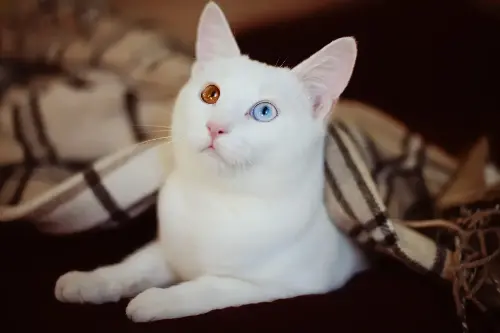Heterochromia is a captivating genetic phenomenon that manifests in the mesmerising diversity of eye colours within the human population, making those who have it stand out in the most striking way. Unlike the common uniformity of eye colour where both eyes share the same shade, heterochromia involves a fascinating difference in the colouration of the irises, which can occur between one eye and the other (complete heterochromia), within a single iris (sectoral heterochromia), or as a segmented patterning radiating from the pupil (central heterochromia).

Understanding Heterochromia
Heterochromia is a result of the distribution and concentration of melanin, the pigment responsible for the colouring of the eyes, skin, and hair. The specific type and level of heterochromia can vary greatly from person to person. Complete heterochromia, for instance, is where each eye is a distinctly different colour, commonly one blue and one brown. Sectoral heterochromia presents a segment of a different colour in one iris, while central heterochromia features a spike-like burst of an alternative colour radiating from around the pupil, distinct yet blending with the primary hue of the iris.
This intriguing trait can be inherited, or it may develop as a result of a genetic mutation. Alternatively, it could arise from an injury or be indicative of a medical condition, although in most cases, it is merely a harmless anomaly with no associated health implications.
The Genetic Play Behind the Scenes
The science behind heterochromia is deeply rooted in genetics and the intricate ballet of genes responsible for melanin distribution. Melanin's production, transfer, and storage within the iris can be influenced by several genes, and alterations in these genes can lead to variations in eye colour. The interaction between these genes and environmental factors determines the specific ocular hue.
At birth, many children display a lighter eye colour due to a lesser concentration of melanin. As they age, the melanin content in their eyes can increase, leading to a darker colouration. In some cases, this process occurs unevenly between the eyes or within an eye, resulting in heterochromia.
The Cultural and Social Impact
Beyond the biological intrigue, heterochromia carries a rich tapestry of cultural significance and aesthetic appeal. Throughout history, those possessing this trait have often been regarded with a mixture of awe and curiosity. In some cultures, heterochromia is viewed as a sign of inherent wisdom or regarded as particularly enchanting and attractive.
In contemporary society, heterochromia is often celebrated for its unique beauty. It has been prominently featured in the arts, including literature and cinema, where characters with this trait are often imbued with a sense of mystique or otherness, enhancing their narrative allure. Famous figures such as David Bowie, although his condition was due to anisocoria resulting from a past injury, not true heterochromia, and actresses like Mila Kunis have brought further attention to heterochromia, showcasing the captivating appeal of this rare trait to a broader audience.

Heterochromia in the Animal Kingdom
Interestingly, heterochromia is not exclusive to humans but is also seen in various animal species. It is particularly prominent in certain breeds of cats and dogs. For example, the Turkish Van, a breed of cat, is often noted for its different coloured eyes, typically one amber and one blue, which add to their striking appearance. Similarly, some breeds of dogs like the Australian Shepherd or Huskies can exhibit heterochromia, making each animal exceptionally unique.
Fostering Appreciation for Diversity
The phenomenon of heterochromia highlights the wondrous diversity found in the natural world, reminding us of the infinite combinations that define the living environment. People with heterochromia, often stand out due to this rare feature, can be seen as living symbols of the beauty found in diversity and the uniqueness of each individual.
In a world that sometimes seeks conformity, recognising and celebrating unique traits like heterochromia enriches our collective appreciation of human diversity. It serves as a reminder of everyone's unique identity and the genetic marvels that contribute to the broader human experience.
In conclusion, heterochromia is more than just an unusual genetic trait—it's a gateway to exploring the complexities of genetics, a touchstone in art and culture, and a beautiful reminder of our diversity. For those who possess this rare characteristic, and even those who simply admire it from afar, it underscores the beauty of being unique in a world of billions.